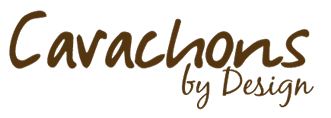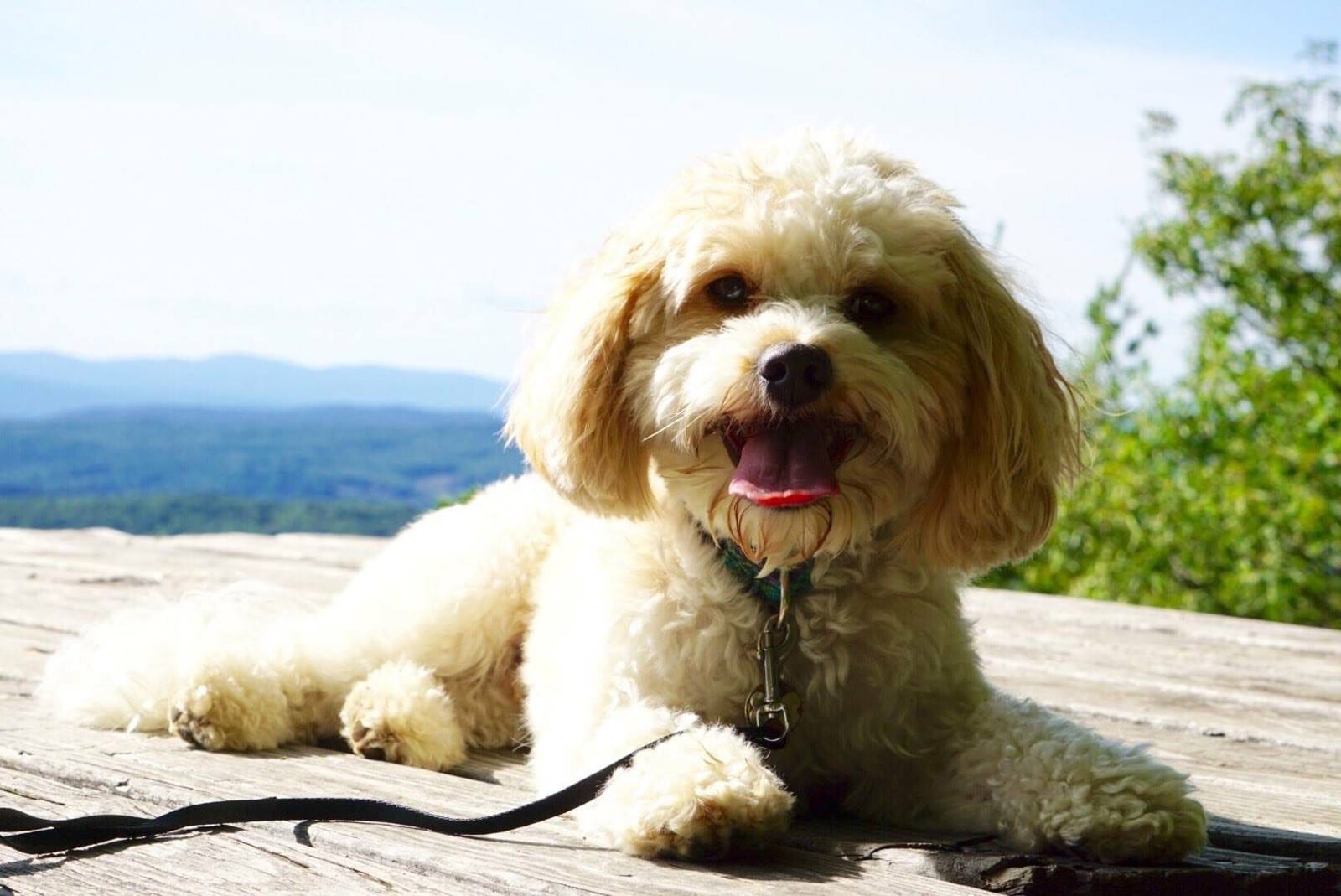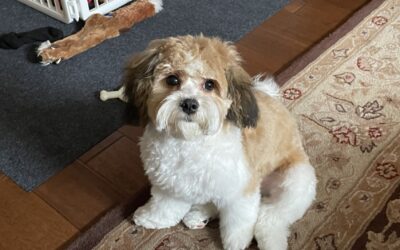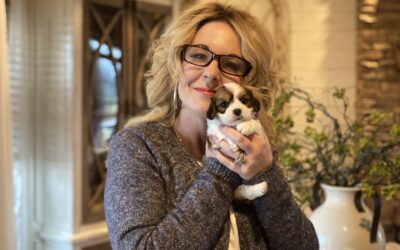Harness or Collar…..that is the question
We at Cavachons by Design always recommend our new puppy owners start off training their new puppy with a body harness. If you desire to graduate to a collar when your little one is older, that is perfectly fine.
A proper harness will create a secure embrace around his body, reducing bucking or pulling which is often found when using a collar on a puppy. Trachea’s/throats are very sensitive and can be harmed quite easily. A great preventive measure that can be taken to help eliminate the risk of your puppy developing Tracheal Collapse is using a harness.
You first want to start with a harness that is adjustable both around the body and the neck. Your puppy will grow fast…believe me! Be sure to check the fit of the harness every week and adjust it as your Cavachon puppy grows. It needs to fit snug enough so that he can’t get out of it but loose enough for two fingers to fit between it and your puppy’s neck.
Let’s get started
The next step in harness training is to get your puppy used to it. When you first put the harness on, your puppy will more than likely scratch at it…perhaps even try to get it off (he will likely start ignoring the awareness of the collar within a few days of training). A nice trick is to put the harness on when your pup is eating and playing under your supervision, thus distracting the puppy from thinking about it.
Remove the harness only at a time when your puppy is NOT trying to get out of it. If you take it off when he is upset about it, you encourage the bad behavior. To the puppy, he has won the battle and he got that nasty ‘ol thing removed! Make sure the harness you are using is comfortable….not stiff. Lightweight nylon/mesh is always nice.
Introduction to the leash
Once your puppy becomes accustomed to his harness (this may take a couple of days), put a leash on him when he is eating or playing. Let your puppy go where he wants to go (always having your eyes on him) with the lead trailing behind him. It’s always good to distract your puppy with play or some kind of interaction if he seems bothered by the leash or even starts to chew on it.
No pulling
Always remember that an enormous part of leash training is to teach your Cavachon puppy to walk with the leash LOOSE… no pulling. This is not only for the purpose of being able to manage your puppy, but also to protect the health of your little one. A puppy/dog pulling on a leash can suffer damage to the throat/trachea, which can potentially be very serious. (please see Collapsing Trachea Syndrome defined at the end of this article).
If your puppy makes an endeavor to pull you, stand still. What you are wanting to portray to your puppy is very simple…. pulling on the leash is futile. It doesn’t work. You can help yourself and your puppy so very much by making sure that right from the start, pulling on the leash never works for your puppy. This way, pulling will never become a habit.
As soon as the puppy notices that trying to pull didn’t work because you stopped, switch to an attention-getting, puppy-follow-me mode, and get that puppy moving with you! This is the game. And to a puppy, it really does need to be a game. At all times, be prepared to reward your puppy with little treats (but not too many treats), games and other things the puppy likes, for moving with you, coming to you, and looking at you. Make this a habit, and develop your body language and voice to what works best with YOUR puppy.
Just a few minutes of practice each day will make all the difference in the world. Before you know it, you’ll have a puppy that is accustomed to his harness and leash and even better an adult dog that YOU can take for a walk, as opposed to HIM taking you for a walk! It’s well worth the time to develop this skill with your puppy.
One last important note
NEVER NEVER NEVER leave your puppy or dog in a playpen or crate unsupervised with a harness or collar on. A very dear friend of ours lost her Husky this way when he accidentally hung himself by his collar. Remove the collar whenever your pup goes into the crate. Do not leave a leash on an unattended dog. It can catch on things and trap the dog in dangerous and traumatic situations. Leashes are only safe during supervised times.
Collapsing Trachea Syndrome Defined
Collapsing trachea syndrome can make it difficult to breath and often the puppy/dog tends to breathe through their mouth rather than through their nose. The inability to breathe can cause the puppy/dog to become distressed or panic suddenly. Breathing problems can also interfere with the puppy/dog’s eating and sleeping patterns. Some dogs with tracheal problems may periodically choke, cough or gag even though no foreign object is obstructing their breathing. In some cases, the inability to breathe properly discolors the dog’s skin, which takes on a bluish tinge. This condition, cyanosis, represents a potentially life-threatening deficiency. Chronic bacterial or viral infections may also be a result of tracheal damage, because the dog is unable to properly clear pathogen-bearing mucus from his respiratory system.




0 Comments